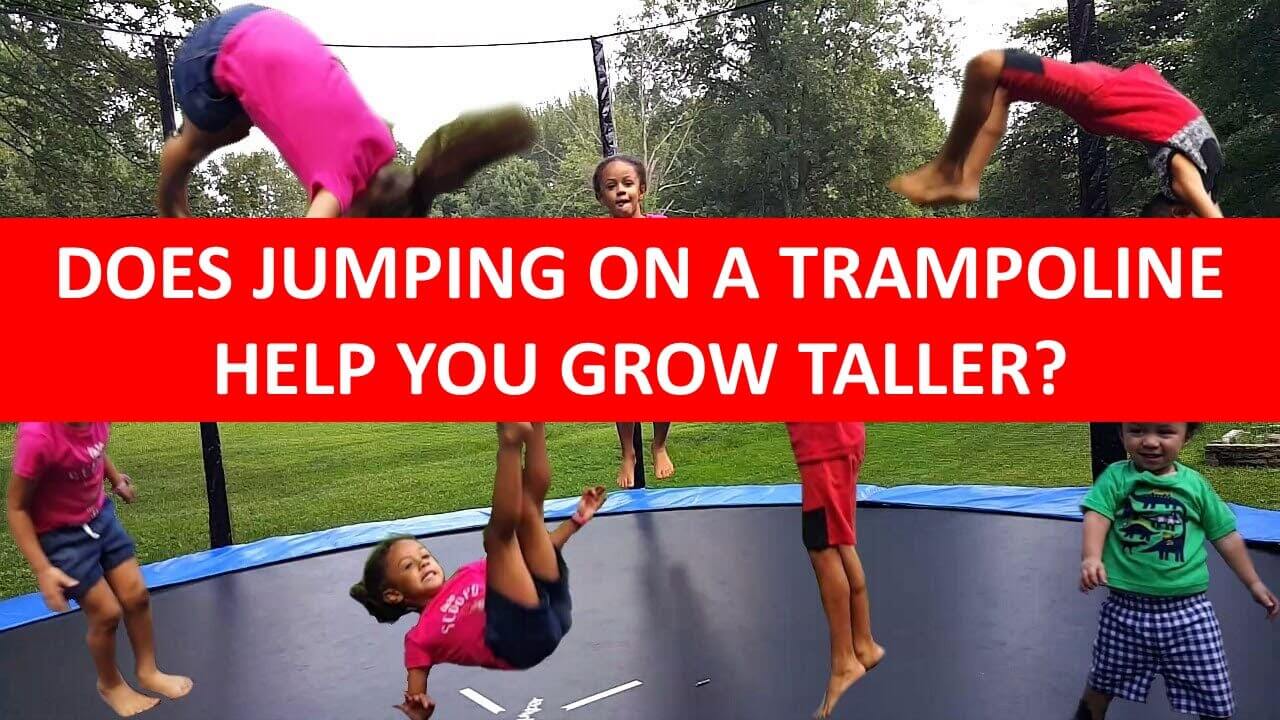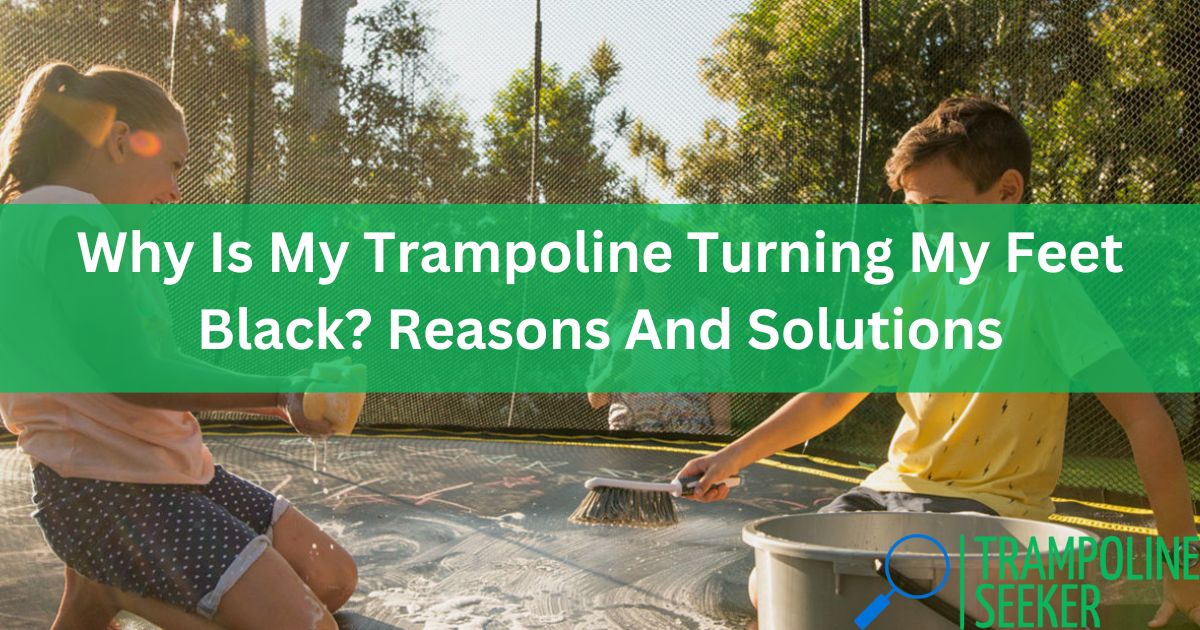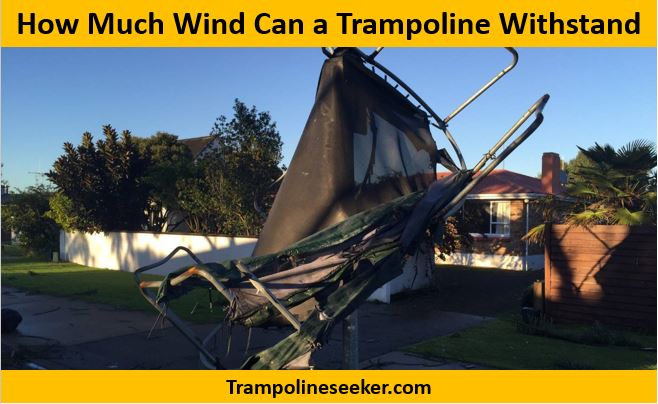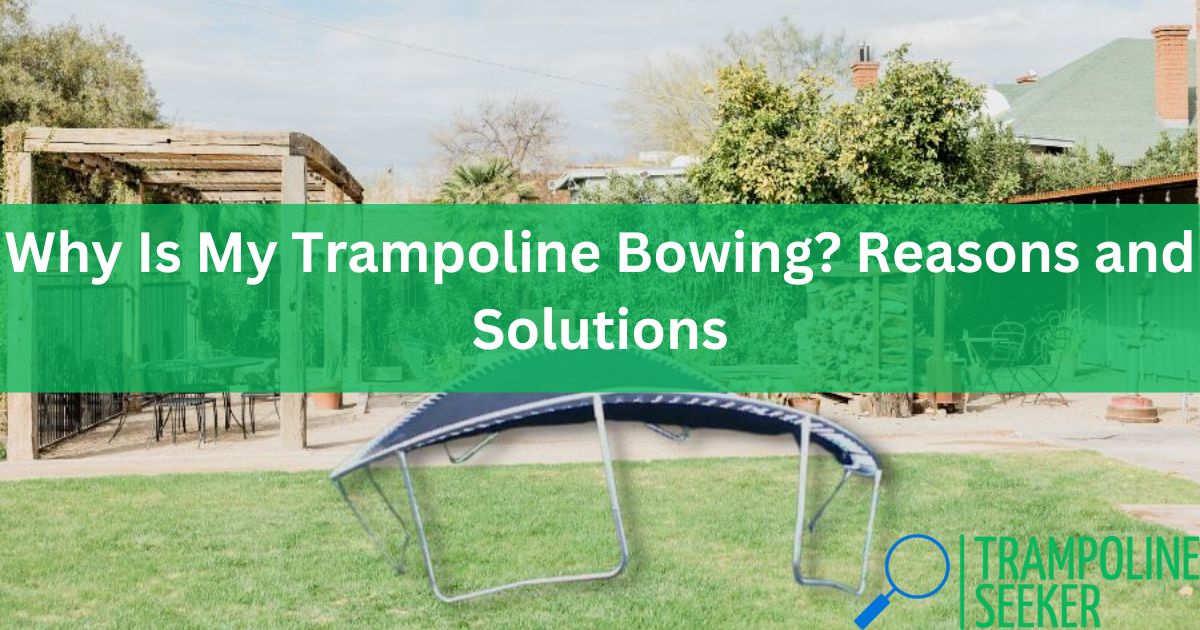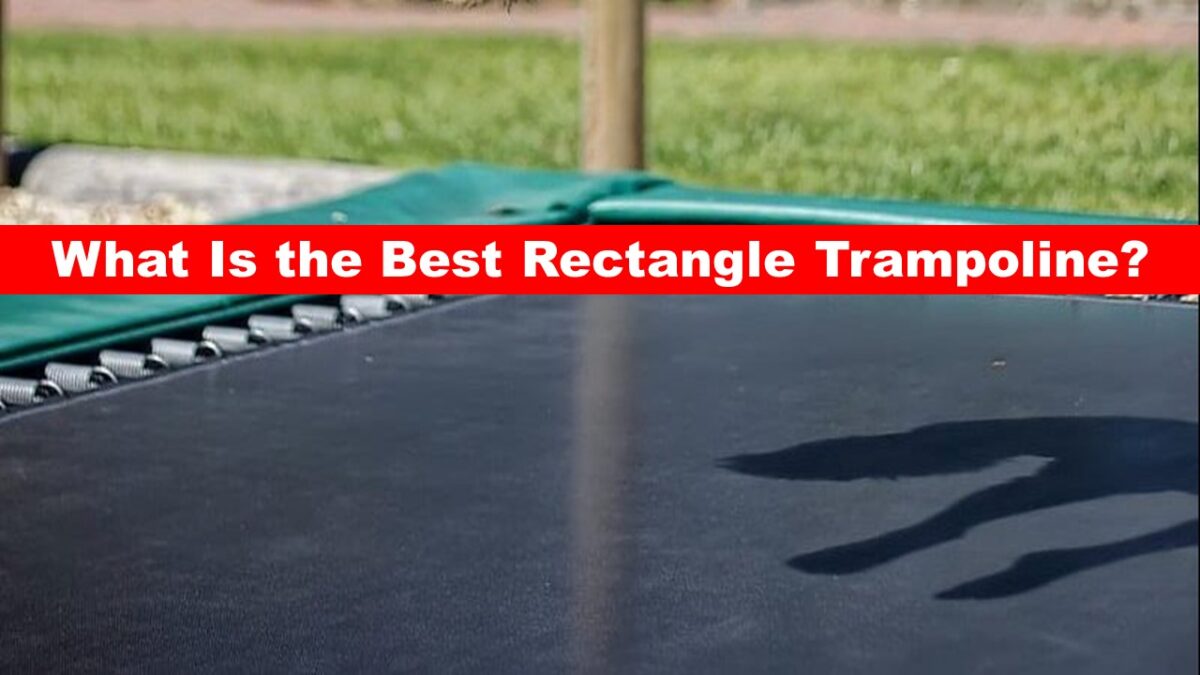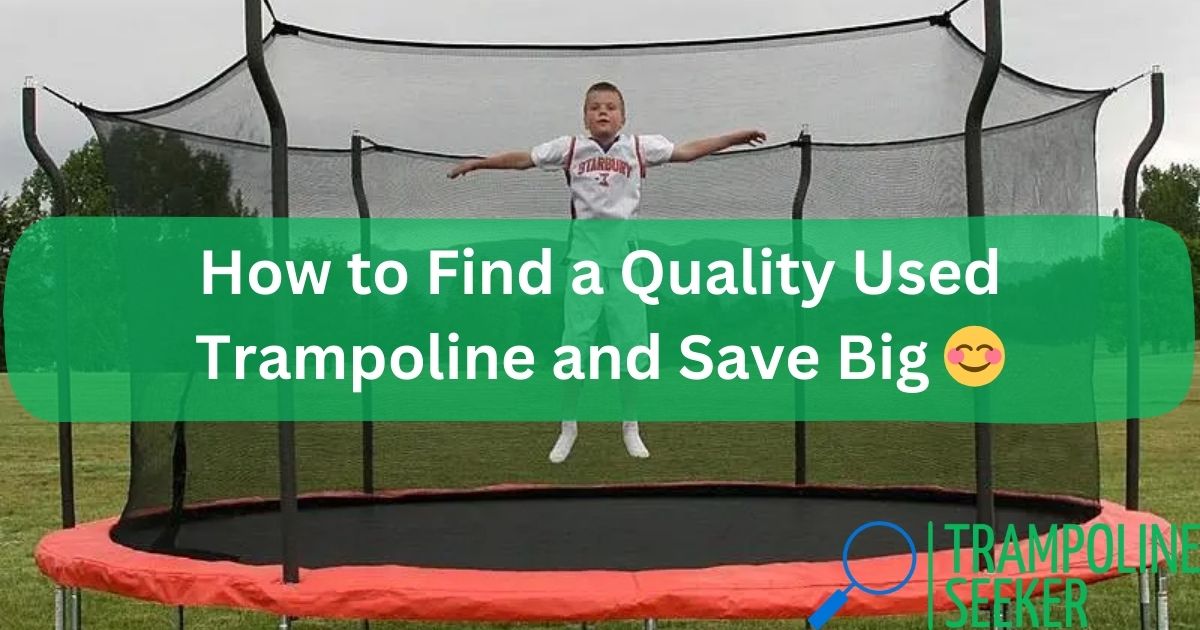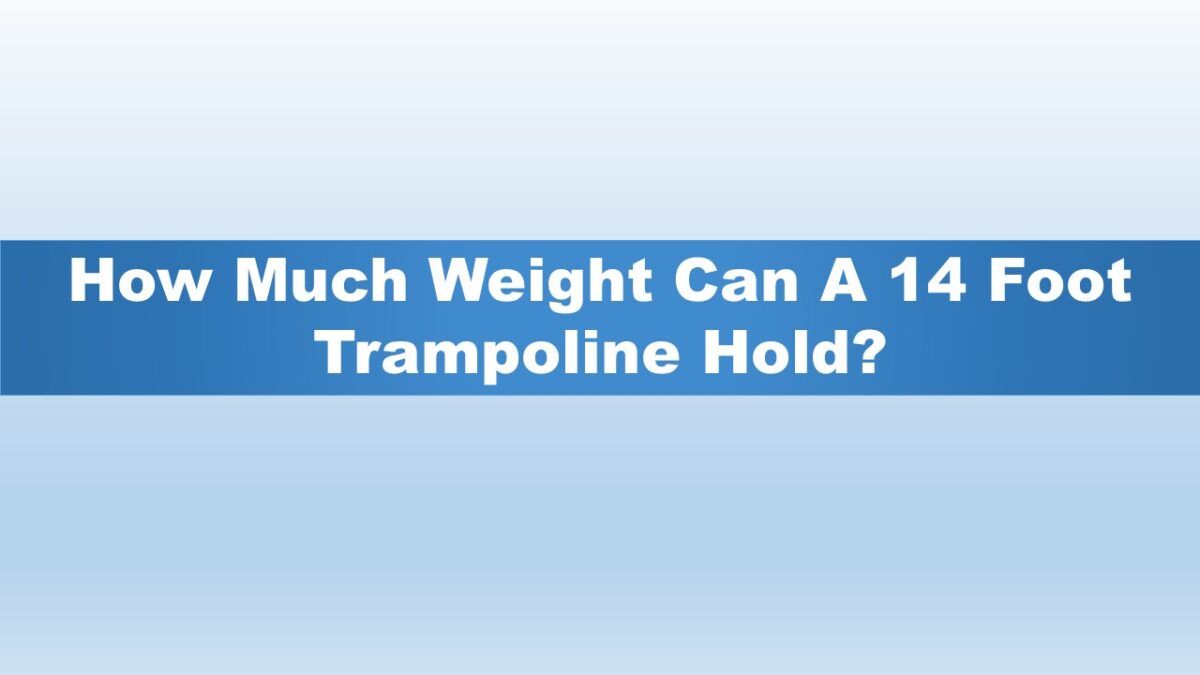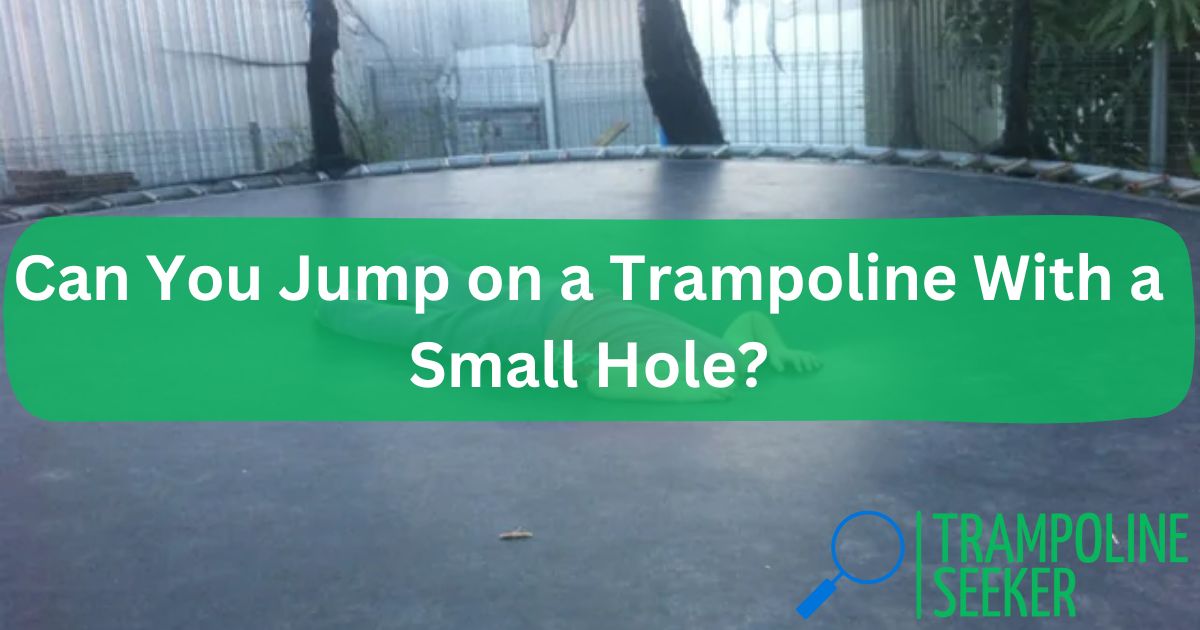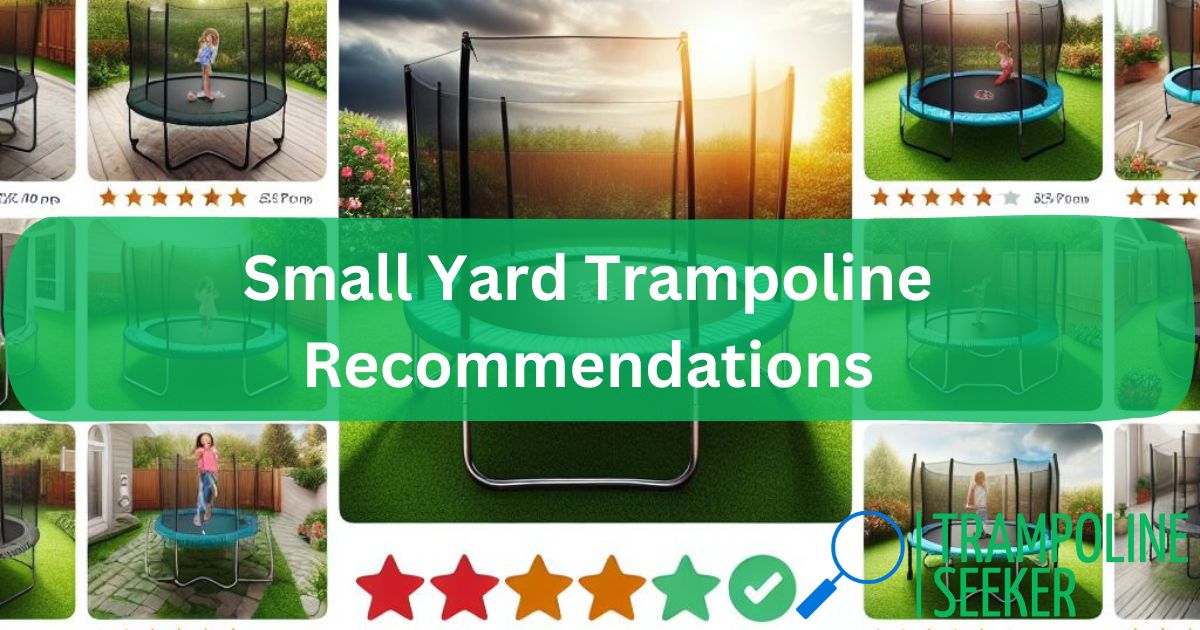A trampoline is one of the best ways for kids to get exercise and burn off energy. As a parent, I’m always looking for fun activities to keep my children active and entertained. Our family recently moved into a new home that unfortunately doesn’t have much of a backyard. With limited outdoor space, I wasn’t sure if adding a trampoline was even an option. I started researching whether or not you can put a trampoline on a concrete surface.
The short answer is yes, you can put a trampoline on concrete. However, there are some important safety considerations to keep in mind.
In this blog post, I’ll share my findings on the risks of concrete trampoline setups, tips for minimizing hazards, and some safer surface alternatives for trampolines.
Dangers of Putting a Trampoline on Concrete
While it is possible to put a trampoline on a concrete surface, most experts advise against it. Here are some of the potential risks and dangers to be aware of:
Increased Risk of Injury
One of the biggest concerns with concrete trampoline setups is the heightened risk of injury. Falls onto concrete can result in fractured bones, head and neck trauma, and other serious impacts to the body. Without any give, concrete does not absorb shock or cushion falls whatsoever.
Compared to jumping on grass or a soft surface, bouncing on concrete significantly magnifies the landing impact on joints and the body. This puts kids and adults at greater risk for sprains, fractures, and other trauma.
Trampoline Structural Issues
The rigid, unforgiving nature of concrete can also lead to premature wear and tear on the trampoline frame and mat. The repeated bounce and motion on concrete may compromise the stability and integrity of the frame over time. Trampolines rely on having some flexibility in the legs to handle the movement and force. On concrete, the leg support and frame take the full brunt of all that energy. This can cause the frame to bend, joints to loosen, and bolts to snap much faster than normal use.
Trampoline Movement
Since concrete offers no grip or opportunity for anchoring, trampolines placed directly on concrete are prone to sliding and shifting around. All of that jumping can cause the trampoline to gradually move and lose proper positioning. On grass or softer surfaces, the weight and legs of the trampoline sink slightly into the ground keeping it contained in one spot. With no anchoring on concrete, wayward bouncing can send the trampoline drifting across the yard. This movement can be extremely dangerous, especially for smaller supervised kids.
No Shock Absorption
Unlike grass, sand, or other more forgiving materials, concrete provides zero shock absorption. All of the impact and force from jumping travels straight to your feet, ankles, knees, back, and the rest of your body. Over time, this constant pounding can result in joint problems, pain, and other chronic issues. The unnaturally hard landing also reduces the enjoyment and comfort of bouncing.
Tips for Putting a Trampoline on Concrete
While using concrete for trampoline placement introduces risks, there are ways to minimize hazards if you have limited options. Here are some tips for creating the safest setup possible:
Add Protective Mats or Pads
Putting thick, high-quality mats or pads under and around the trampoline can help cushion falls and landings. Look for mats made of dense foam at least 1-2 inches thick. Secure the protective pads tightly to the concrete so they don’t shift around. Mats will provide a bit of shock absorption and fall protection. Just know that mats alone cannot eliminate all the risks on concrete.
Use a Safety Net Enclosure
Installing a full safety enclosure net is strongly recommended for concrete installations. Quality safety nets attach to the trampoline frame and prevent accidental falls off the sides. The netting creates a barricade on all sides to keep jumpers contained safely on the trampoline surface. This is especially important for young kids who are still learning balance and control.
Anchor the Trampoline Legs
Drilling anchor holes into the concrete and bolting down the trampoline frame is highly advised. This prevents the bouncing action from shifting the entire trampoline around the yard. Buy heavy-duty anchors made for securing trampolines and other play equipment to the ground. Proper anchoring also helps fortify the stability and integrity of the frame over time.
Supervise Use
With the increased risks of concrete trampolines, it’s essential to properly supervise all use. Do not allow young children on the trampoline unsupervised. Enforce rules and limits on the number of users at once. Watch for signs of shifting, instability, or other emerging issues. Stop use immediately if any problems develop with the surface, enclosure, or frame.
Limit Jump Height
Instruct all users to limit their jump height as much as possible. The higher you bounce on a trampoline increases the landing forces and demands on your body. On concrete, the goal should be gentle, controlled bouncing to mitigate injury risks. High, aggressive bouncing can be dangerous.
Safer Trampoline Surface Alternatives
While trampolines can go on concrete, it’s far from an ideal setup. If at all possible, consider these safer, shock-absorbing surface options instead:
Artificial Grass
Outdoor artificial grass mats provide cushioning similar to real grass with the convenience of placement anywhere. Just make sure to buy thick, high-quality artificial turf made for playgrounds and not basic lawn decor. The infill and padding underneath the fake blades of grass absorb impact. Artificial grass lasts for years outdoors and does not require any mowing or watering!
Rubber Safety Tiles
Interlocking rubber safety tiles offer great shock absorption for trampolines. These thick rubber tiles connect together to form a soft surface. The tiles are durable for outdoor use and provide protection similar to gymnastics floors or playgrounds. They are also a good option if you want to take up just the trampoline area rather than your whole yard.
Sand Pit
Creating a sand landing area is a great way to absorb impact and anchor the trampoline. You will need an area approximately 6 x 6 feet around and under the trampoline frame to contain the sand. Use at least 6-12 inches of soft sandbox play sand. The sand helps cushion landings and prevents the trampoline from sliding or tipping. Just be aware that sandbox sand requires drainage and frequent raking to keep smooth.
Wood Chips or Shredded Bark
For organic cushioning, materials like wood chips, shredded bark, and mulch can work. Spread a 6-12 inch layer of soft mulch or wood chips across the trampoline zone. The mulch helps absorb some shock and impact. Be sure to top off and rake the material smooth on a regular basis as it settles and compacts down.
Grass Home Installation
If there are limited grassy areas in your yard, consider installing rolls of instant sod specifically under and around the trampoline. This creates a natural grass landing zone without taking up your whole lawn. Prepare the soil and lay good quality rolls of sod where you want the trampoline situated. The grass grows together in a few weeks, giving you an ideal shock-absorbing surface.
The Bottom Line
While it is possible to put a trampoline on concrete, doing so magnifies injury risks and long-term equipment wear and tear. Concrete offers no shock absorption or cushioning for a safe bouncing experience. If a concrete surface is your only option, take precautions like safety netting, matting, and anchoring to reduce hazards. For optimal safety and enjoyment, install your trampoline over grass, sand, wood chips, or other more forgiving materials. With some creativity and planning, you can find a solution to fit your unique outdoor space.
Articles You May Like to Read:



